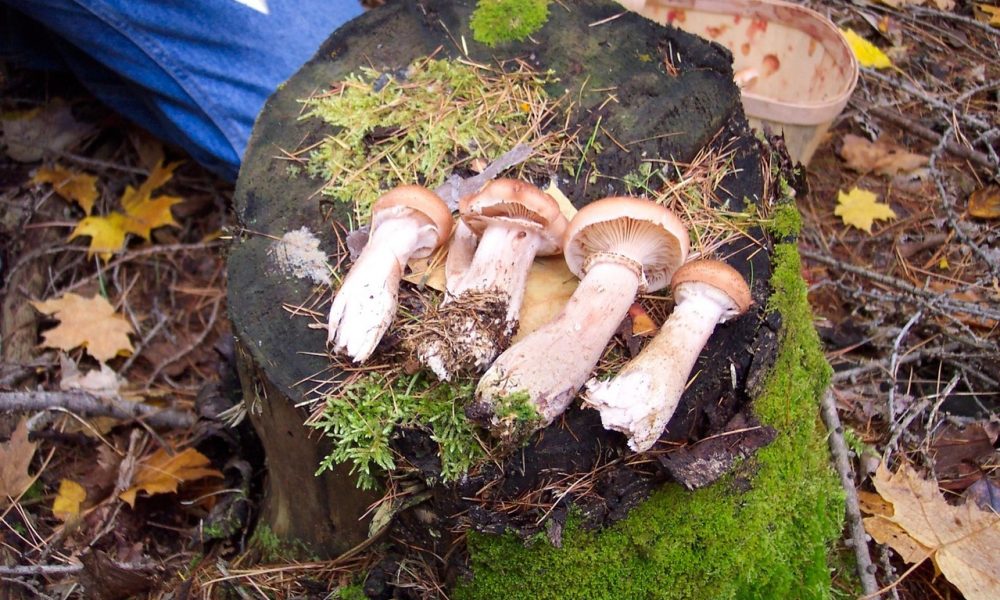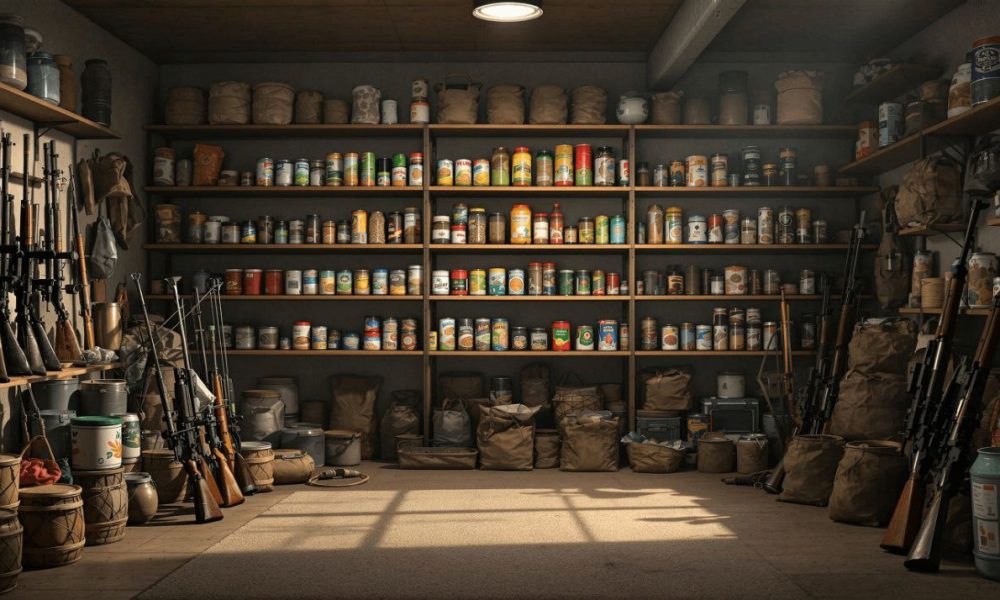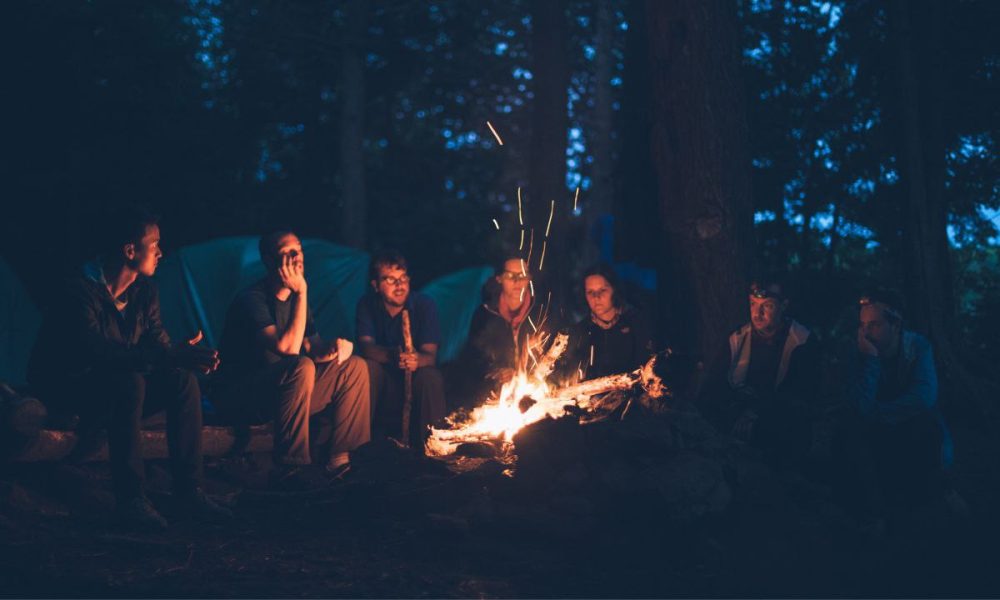Time to Stock Up On Natural Forage For Winter, or Earn Some Extra Babylonian Magic Squares At Your Local Farmer’s Market
Fall is here, and for many Beartarians, that means hunting season and time to finish canning all of those wonderful things that have been growing in our gardens all season long. In our little slice of Beartaria, Fall also means long walks in the woods “hunting” the wide variety of delicious (and bountiful) wild mushrooms. Last year, we bagged over 60 lbs. of Chanterelles alone, not to mention several huge finds of Chicken and Hen of the Woods, and a myriad of other tasty treats. The proven health benefits and sheer amount of freely growing sustenance means that wild mushrooms should be on the Fall menu of all Bears throughout Greater Beartaria.
Whenever entering a conversation on finding, identifying, and eating wild mushrooms, the obligatory disclaimer must be made. I am not a mycologist, just a bear who loves to hunt and eat wild mushrooms.
Some wild mushrooms are absolutely toxic and the utmost care should be taken in order to accurately identify each mushroom prior to eating.
Also, most wild mushrooms should be cooked thoroughly, and eaten in small amounts initially to ensure that allergies are not present. OK, now that I have performed the necessary CYA statements, I will tell you that hunting and eating wild mushrooms is not anywhere near as daunting as a Bear might think. People have been consuming mushrooms since nearly the beginning of (linear) time and with a few hard and fast “rules”, even your bear cubs will be fully capable of collecting wild fungi safely.
Let me gently ladle up some general safety gravy on the “rules”.
I use quotes around the word rules for good reason. As you gain experience, skill, and confidence in your fungi foraging capabilities, many of the rules will fall to the wayside. Sayings such as, “If it stains blue, it’s not for you…” and many others seem ridiculous, once you identify and eat a pan full of indigo milky mushrooms. They are completely blue, literally bleed a deep blue and are delicious and safe, with few/no real lookalikes.
The one mushroom hunting colloquium that I do still keep in my mental rolodex is, “There are old mushroom hunters, and there are bold mushroom hunters, but there are NO old, bold mushroom hunters.” When I was first bitten by the wild mushroom bug, I simply consulted my local field guide from the Missouri Department of Conservation and started hunting. This is an excellent way to start, as it gets you out in the woods without weeks of hand wringing about possible poisoning. The rules that stick with me still are the following:
1) Identify the truly dangerous species, such as destroying angel, deadly gallerina, jack-o-lanterns, little brown mushrooms, etc. and avoid anything you find that even resembles these mushrooms. The ones I named account for over 90% of fatal mushroom poisoning in North America, so avoiding them and their lookalikes starts you off on pretty solid ground. The majority of other non-edible mushrooms will cause vomiting, stomach upset or bowel issues. While not deadly, it is still a solid plan to identify and steer clear of those mushrooms as well.
2) Start off with a handful of easily identifiable mushrooms with no toxic lookalikes. This is why morel hunting is so popular. They are very easy to identify, and their lookalikes are easily found when cut in half vertically.
3) Collect any unidentified specimens in a separate container, to more accurately identify at home.
4) Never throw caution to the wind and eat something that has not been verified. I refer you back to the quote above regarding the lack of old, bold mushroom hunters.
5) Consult field guides, identification websites, instructional videos, and books prior to heading out to the woods, and then again when looking your harvest over, once home.
If your biscuits are still dry and you want to cook up some of your own Fall Mushroom Gravy, read on!
Now, keep in mind that my piece of Beartaria is in central Missouri, so the mushrooms my family and I often find may be different from those popping up this time of year in your neck of the woods. However, unless your local environment is completely devoid of water, decaying wood, or shade, you should be able to rustle up some wild grub.
One of the first wild mushrooms that I properly identified and ate was a Hedgehog Mushroom. They are easily identified by the tiny, icicle-like spines on the underside of their cap (where most shrooms keep their gills) and they have no lookalikes in Missouri. I memorized the traits of several different species and was extremely excited to find these little gems among a handful of what I hoped (and was not disappointed) were Golden Chanterelles. Chanterelles are smooth or ridged under their cap, which these appeared to be. I wasn’t sure until later that day, with a few photo references (never use illustrations) and other identification methods, that they were truly Chanterelles. While looking up additional info, I discovered that they can also fetch up to 20 dollars a pound at local markets – insert hand rubbing here-. Now, my whole Bear Clan confidently pluck up pounds of both Hedgehogs, and Chanterelles throughout the Fall.
Another easily identifiable Fall mushroom is the sulphurous Chicken of the Woods. Chickens are great, and really do resemble chicken in texture. Their great taste is only exceeded by their size! I have found Chicken of the Woods fruitings of up to 20 lbs., and have heard stories of people finding over 80 lbs. in one spot. That is a lot of mushroom. They are blaze orange and yellow, growing in shelves on decaying wood, and have small pores on their underside. Nothing else in our woods resembles them. Their counterpart, the Pale Chicken of the Woods have a few lookalikes such as Berkeley’s and Black Staining Polypore, both of which are edible, so no harm no foul. These things are solid meat and can be fried, grilled, dried, pickled, or prepared just about any way you cook meat or vegetables. We love fried and grilled the best.
While Spring and Summer are key seasons for gardening, Fall is actually the season with the widest abundance of wild mushrooms. With Milk Caps, Chanterelles, Chicken and Hen of the Woods, Hedgehogs, and a wide array of other wild fungi popping up all over the country, it is the perfect time for Bears to hit the woods and grab a bunch of this free, delicious, and nutrition packed chow. Onward!!!
Written By: Woodworking Gunny Bear
-Woodworking Gunny Bear is a 43 year old, 21 Rogan tall, retired Marine Gunnery Sergeant. He and his family settled in Texas County, Missouri after his time in the Corps. They focus their time on homesteading, animal husbandry, and their woodworking business: OrigamiHandmadeGifts on Etsy. They maintain a homestead populated with horses, goats, meat rabbits, a bull (the heifer did not survive the winter), pigs, and a wide array of fowl.-




